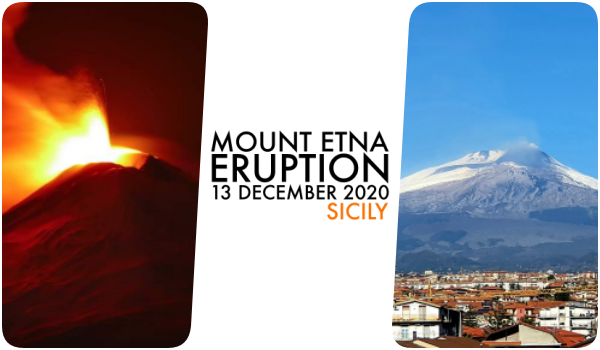
Mount Etna eruption december 2020
New Strombolian eruption on Mount Etna that occurred during the night of 13 December 2020. A new eruption from the South East crater began on the volcano. The lava flow during the night was visible from a great distance, amid particularly strong volcanic rumbles and tremors. Following are the latest details collected by the National Institute of Geophysics and Volcanology, Etneo Observatory. Known in acronym as INGV, it is the Italian research institute responsible for the study of geophysical and volcanological phenomena and the management of the respective national monitoring networks for seismic and volcanic phenomena.
Etna, whitened by the snow, woke up last night, causing a “rain” of ash on Catania that “blackened” cars, balconies, streets and sidewalks.
The INGV (National Institute of Geophysics and Volcanology), specifically the Etneo Observatory, announces that starting from 19:20 the various monitoring networks have recorded an increase in the eruptive activity at the SE Crater. At the same time, a sudden increase in the amplitude of the volcanic tremor is observed which in half an hour has gone from medium to high levels, at the moment the eruption appears to be decreasing. As for the effusive activity, filmed by special cameras, the lava flow that has spread in the south-west direction appears to be cooling.
Catania woke up covered by a thin layer of black ash, like the entire southern flank of the volcano, previously covered by snow. This is due to an intensification of the active explosive from the south-east crater, in the early hours of the morning. This activity, as confirmed by the INGV, has already been exhausted, like that at the crater which appears to be continuously decreasing. As for the effusive activity, according to the latest updates, between the two flows one appears in cooling, and the other indicates average values and below the attention threshold.